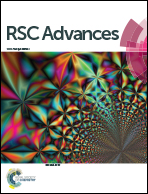Near-infrared light emitting diodes using PbSe quantum dots
Abstract
Near infrared light emitting diodes (NIR LEDs) were fabricated employing blue GaN chips as the excitation source and PbSe quantum dots as the NIR emitting materials. Quantum dots with different emitting wavelengths were selected to fabricate three NIR LEDs corresponding to two typical applications of illumination and optical communication. The variation of emission peak and full width at half-maximum of the devices were investigated under different voltage bias, and the highest external quantum efficiency of 2.52% was achieved, which was comparable to those commercial InGaAsP LEDs and visible quantum dot electroluminescence LEDs.


 Please wait while we load your content...
Please wait while we load your content...